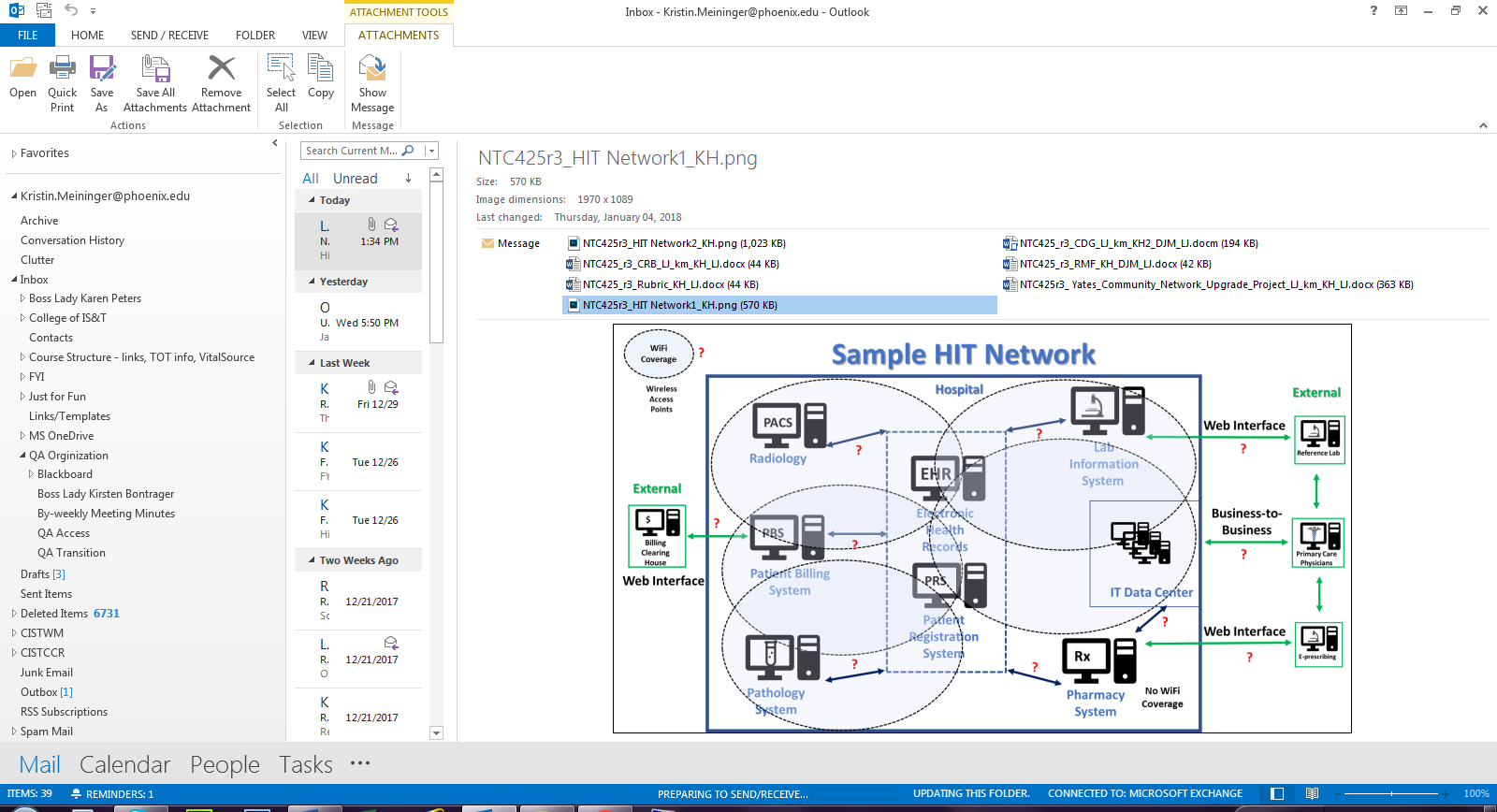Question 1: Consider IT standards (protocols, OSI model, etc.) and health data standards (i.e., ISO OSI, HL7 and TC215), and data being exchanged. Identify which category or categories of standards ap
NTC/425 r3

Sample HIT Network

This diagram is similar to the Yates Community “Current High-level Private Architecture” diagram included in the Yates Community Network Upgrade Project Overview document. This diagram, however, also includes an IT Data Center component, indications of WiFi coverage, and question marks indicating potential opportunities for where compliance with data standards can be supported.
The architecture diagram consists of seven major internal Health Information Technology (HIT) system components, integrated with a centralized Electronic Health Records (EHR) system. The center of the diagram holds icons representing the EHR system and the Patient Registration System (PRS). These two systems are surrounded by a dotted line. Around the two central systems are the following other internal HITS components arranged in clockwise fashion, starting at 1:00:
Located at the 1:00 position – Lab Information System (Clinical System)
Located at the 3:00 position – IT Data Center (Administrative System)
Located at the 5:00 position – Pharmacy System (Clinical System)
Located at the 7:00 position – Pathology System (Clinical System)
Located at the 9:00 position – Patient Billing System (Administrative System)
Located at the 10:00 position – Radiology (Clinical System)
These six components are surrounded by a solid line indicating they, along with the centered EHR and PRS systems, comprise the full internal network.
There are two-way arrows between each of the six individual components and the dotted line around the EHR and PRS systems, indicating where communication occurs. The only communication arrow between two individual components is between the IT Data Center and the Pharmacy Center. Each communication arrow has a question mark indicating a potential opportunity to comply with a data standard.
Within the internal HIT system, there are five overlapping circles indicating areas of WiFi coverage. Starting at the 1:00 position and continuing clockwise:
Area 1:00 – 4:00 is covered by two circles:
Circle One covers the Lab system, the top third of the IT Data Center system and the right half of the EHR system
Circle Two covers the IT Data Center, the bottom half of the Lab Information System, and the right halves of the PRS and EHR systems
The bottom half of Circle One is overlapped by the top half of Circle Two
Area 4:00 – 6:00, and the Pharmacy System within it, is not covered.
Area 6:00 – 12:00 is covered by three circles, all of which overlap significantly:
Circle Three covers 6:00 to 9:00, which includes:
The Pathology System
The bottom left quarter of the PRS system
The bottom half of the Patient Billing system
Circle Four covers 7:00 to 10:00, which includes:
The Patient Billing System
The top third of the Pathology System
The right half of the PRS
The bottom right corner of the EHR system
Circle Five covers 9:00 to 12:00, which includes:
The top half of the Patient Billing System
The entire Radiology system
The right half of the EHR system
Around the outside of the internal private architecture are several external systems with which individual internal components communicate.
A Reference Lab system is at 1:00 with a communication arrow labeled Web Interface between it and the internal Lab Information System.
A Primary Care Physicians system is at 3:00 with a communication arrow labeled Business-to-Business between it and the internal IT Data Center.
An E-Prescribing system is at 4:00 with a communication arrow labeled Web Interface between it and the internal Pharmacy System.
A Billing Clearing House system is at 9:00 with an unlabeled communication arrow between it and the Patient Billing System.
Copyright 2019 by University of Phoenix. All rights reserved.



